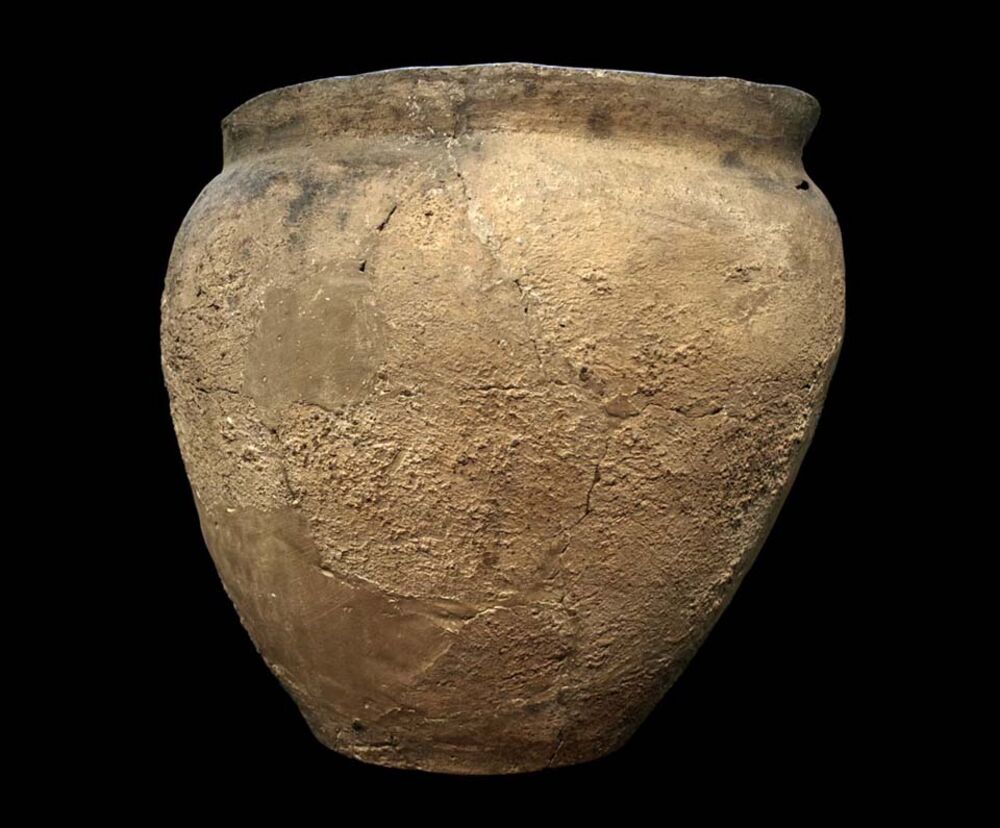17 Cooking Pot
Food has been heated since the mastery of fire. There are traces of fireplaces as early as the Palaeolithic Age. Meat may have been grilled in the charred pits before eating, cooked in the glowing ashes, or heated on the hot stones. Later, food was stored in large vessels. In northern Germany, typical storage vessels for the grain from which people made their staple food, grain porridge, are often found in Iron Age settlements.
Info: Showcase 17

Vessels
Age: 100 - 200 n. Chr. Roman Imperial Period
Roman Imperial Period: With the beginning of iron smelting around 700 BC, the new, harder iron took the place of bronze. The Iron Age is the third major period in human history after the Stone Age and the Bronze Age. In northern Europe it is divided into the Pre-Roman Iron Age, which covers the period from the end of the Bronze Age to the expansion of the Roman Empire at the turn of the century. And the Roman Imperial Period, in which the completely new way of life introduced by the Romans, can also be clearly seen in Free Germania. With the introduction of writing, European prehistory ends - early history begins.
Material: Ceramics
Location: Scharmbeck

Spoon
Age: 4000 - 2200 v. Chr. Neolithic period
Neolithic period: In the Neolithic period, people began for the first time to actively shape and change their environment: sedentarisation was one of the essential prerequisites for civilisational progress. Farmers cleared forests for their settlements, fields and for keeping livestock. They built their farms out of wooden posts, wattle and daub and clay. Cattle, pigs, goats and sheep are recorded as domestic animals. The diet of the people was now enriched by cereals such as wheat and barley, which were cultivated on farmland.
Material: Ceramics
Location: HH-Fischbek
Bone Remnants
Undated
Undated: There is no dating for this object.
Material: Animal Bone (e.g. Mammoth, Steppe Bison)
Location: Elbe near Hamburg




